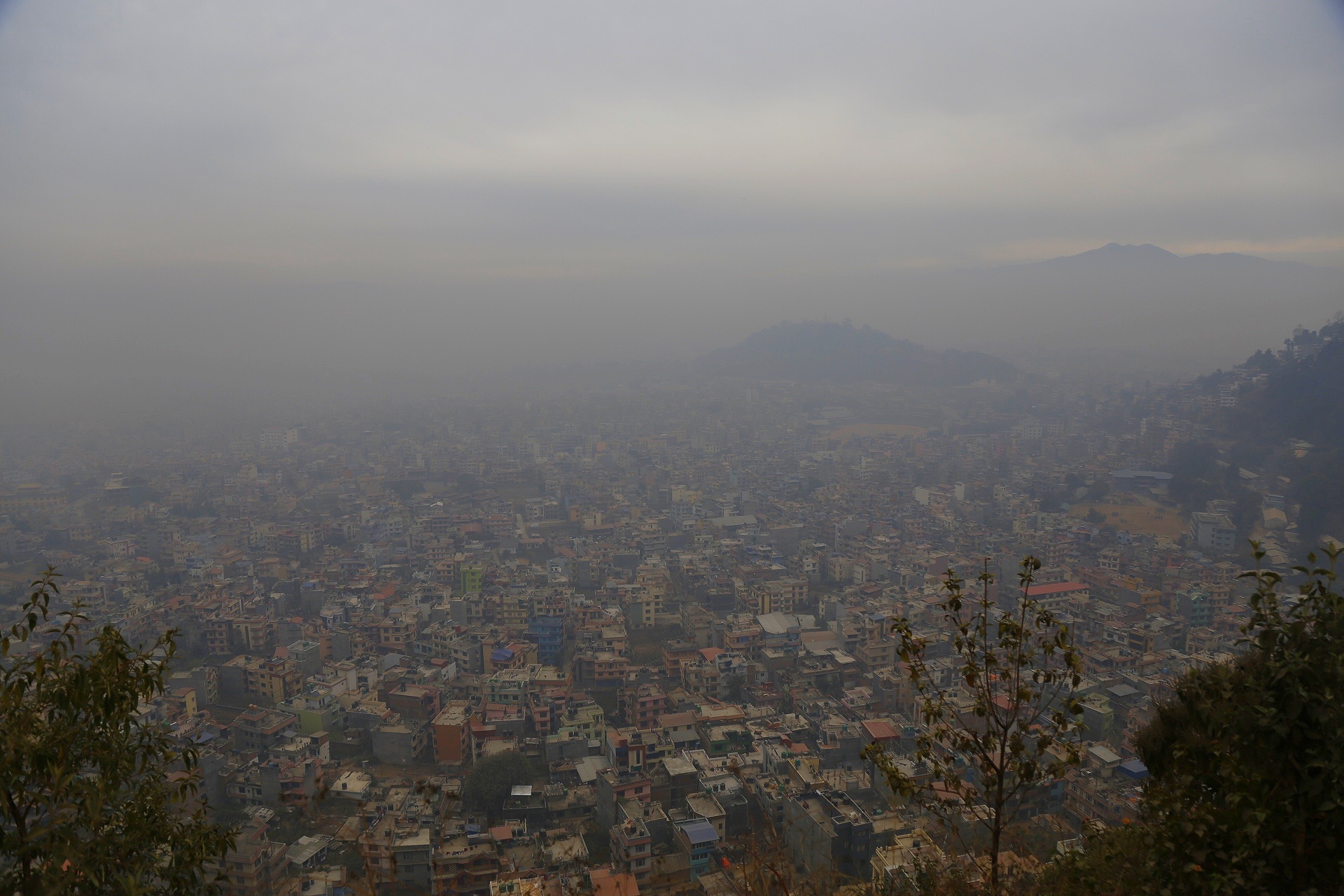Air Quality and Climate Change
Clean air is important to everyone, every day. Air Quality Awareness Week highlights the work that EPA and our partners are doing to understand how climate change is impacting air quality and address the connected challenges of climate change and air pollution. Reducing greenhouse gas emissions is vital for addressing climate change and protecting air quality.
Air Quality and Climate Change Basics
The Earth’s climate is changing due to a buildup of greenhouse gases in our atmosphere that is amplifying the greenhouse effect. Multiple lines of evidence show changes in our weather, oceans, and ecosystems, such as: changing temperature and precipitation patterns, increases in ocean temperatures, sea level, and acidity, the melting of glaciers and sea ice, and changes in the frequency, intensity, and duration of extreme weather events.
Climate change harms air quality in many ways. In many areas of the United States, climate change is expected to worsen harmful ground-level ozone, increase people’s exposure to allergens like pollen, and degrade air quality, which can all negatively impact human health. Many people are disproportionately impacted by air pollution, including those who live in communities of color and low-income communities. Climate change can amplify the inequitable experiences of poor air quality in these communities.
What is the greenhouse gas effect?
When sunlight reaches the earth’s surface, it can either be reflected back into space or absorbed by the Earth. Incoming energy that is absorbed by the Earth warms the planet. Once absorbed, the planet releases some of the energy back into the atmosphere as heat. Solar energy that is reflected back to space does not warm the Earth. Certain gases in the atmosphere absorb energy, slowing or preventing the loss of heat to space. Those gases are known as “greenhouse gases”. They act like a blanket, making the Earth warmer than it would otherwise be. The greenhouse effect helps trap heat from the sun, which keeps the temperature on Earth comfortable. But people’s activities are increasing the amount of heat-trapping greenhouse gases in the atmosphere, causing the Earth to warm up.
What is causing climate change?
Since the Industrial Revolution, human activities have released large amounts of carbon dioxide and other greenhouse gases into the atmosphere, which has changed the Earth’s climate. The largest source of greenhouse gas emissions from human activities in the United States is from burning fossil fuels for electricity, heat, and transportation. Natural processes, such as changes in the sun’s energy and volcanic eruptions, also affect the Earth’s climate. However, they do not explain the warming that we have observed over the last century. Human activities are responsible for almost all of the increase in greenhouse gases in the atmosphere over the last 150 years.
What are the top climate impacts on air quality at both local and regional scales?
- Outdoor and indoor air pollution. Climate-driven changes in weather conditions, including temperature and precipitation, are expected to increase ground-level ozone and particulate matter. These changes worsen existing air pollution and exposure to these pollutants leads to or worsens health problems, such as respiratory and heart diseases. Increases in outside air pollutants, such as ground-level ozone and particulate matter, could lead to higher indoor exposures. These pollutants can enter a building in many ways, including through open doors, windows, and ventilation systems. Indoor air pollutants have been linked to heart disease and respiratory diseases, such as asthma.
- Indoor air pollution. Increases in outdoor air pollutants, such as ground-level ozone and particulate matter, could lead to higher indoor exposures. These pollutants can enter a building in many ways, including through open doors, windows, and ventilation systems and mix with pollutants emitted or generated from within a structure elevating pollutant levels indoors. Indoor and outdoor air pollutants have been linked to heart disease and respiratory diseases, such as asthma.
- Wildfire smoke. Climate change has led to more frequent wildfires and a longer wildfire season. Wildfire smoke pollutes the air and can spread hundreds of miles downwind to other regions. Exposure to wildfire smoke can worsen respiratory illnesses, such as asthma, chronic obstructive pulmonary disease (COPD), and bronchitis.
- Airborne allergens. Climate change is expected to cause earlier and longer springs and summers, warmer temperatures, precipitation changes, and higher carbon dioxide concentrations. These changes can increase people’s exposure to pollen and other airborne allergens, leading to more allergy-related illnesses, such as asthma.
What can we do to reduce climate and air quality impacts?
There are opportunities at individual, local, regional, and national scales that can help reduce climate and air quality impacts. Reducing greenhouse gas emissions is key to addressing climate change, while also protecting air quality.
Communities can take action:
- Go green. Switch to green power from renewable energy sources like solar, wind, and hydropower to reduce both air pollution and greenhouse gas emission.
- Improve air quality at ports. Communities situated near ports – which often include minority communities – are at a higher risk of air pollution exposure. Communities and stakeholders can work with EPA’s Ports Initiative to improve environmental performance and advance clean technologies at ports. This effort helps people living near ports breathe cleaner air. Check out the Community-Port Collaboration Toolkit for ways communities can get involved.
- Plant trees. Planting trees, especially in urban areas along roads or highways, can help improve air quality. Trees also provide other benefits, such as reducing the impact of urban heat islands.
- Stay informed about the Clean School Bus Program. With funding from the Bipartisan Infrastructure Law, EPA’s Clean School Bus Program provides $5 billion over the next five years (FY 2022-2026) to replace existing school buses with zero-emission and low-emission models. Visit the webpage to sign up to receive the latest information about upcoming funding opportunities, how to apply, the eligible technologies and their benefits, and best practices and lessons learned.
Individuals can take action:
- Reduce your exposure. Use the Air Quality Index to guide outdoor activities. When you see that the AQI is unhealthy, take simple steps to reduce your exposure like choosing less intense activities, taking more breaks, and rescheduling activities to a time when outdoor air quality is better.
- Reduce air pollution from vehicles. Walking, biking, and taking public transit, among other actions, can reduce emissions from transportation. These choices can also provide other benefits, such as safer streets.
- Reduce your Carbon Footprint. Many of our daily activities – such as using electricity, driving a car, or disposing of waste – cause greenhouse gas emissions. Together,
SDGs, Targets, and Indicators
SDGs Targets Indicators SDG 3: Good Health and Well-being Target 3.9: By 2030, substantially reduce the number of deaths and illnesses from hazardous chemicals and air, water, and soil pollution and contamination No specific indicators mentioned in the article SDG 7: Affordable and Clean Energy Target 7.2: By 2030, increase substantially the share of renewable energy in the global energy mix No specific indicators mentioned in the article SDG 11: Sustainable Cities and Communities Target 11.6: By 2030, reduce the adverse per capita environmental impact of cities, including by paying special attention to air quality and municipal and other waste management No specific indicators mentioned in the article SDG 13: Climate Action Target 13.1: Strengthen resilience and adaptive capacity to climate-related hazards and natural disasters in all countries No specific indicators mentioned in the article SDG 15: Life on Land Target 15.1: By 2020, ensure the conservation, restoration, and sustainable use of terrestrial and inland freshwater ecosystems and their services, in particular forests, wetlands, mountains, and drylands, in line with obligations under international agreements No specific indicators mentioned in the article 1. SDGs addressed or connected to the issues highlighted in the article:
– SDG 3: Good Health and Well-being
– SDG 7: Affordable and Clean Energy
– SDG 11: Sustainable Cities and Communities
– SDG 13: Climate Action
– SDG 15: Life on Land2. Specific targets under those SDGs based on the article’s content:
– Target 3.9: By 2030, substantially reduce the number of deaths and illnesses from hazardous chemicals and air, water, and soil pollution and contamination.
– Target 7.2: By 2030, increase substantially the share of renewable energy in the global energy mix.
– Target 11.6: By 2030, reduce the adverse per capita environmental impact of cities, including by paying special attention to air quality and municipal and other waste management.
– Target 13.1: Strengthen resilience and adaptive capacity to climate-related hazards and natural disasters in all countries.
– Target 15.1: By 2020, ensure the conservation, restoration, and sustainable use of terrestrial and inland freshwater ecosystems and their services, in particular forests, wetlands, mountains, and drylands, in line with obligations under international agreements.3. Indicators mentioned or implied in the article that can be used to measure progress towards the identified targets:
– No specific indicators were mentioned in the article.Note: The article provides general information about the impact of climate change on air quality and the importance of reducing greenhouse gas emissions. While it highlights the connection between climate change and air pollution, it does not provide specific indicators or data to measure progress towards the identified targets.
Copyright: Dive into this article, curated with care by SDG Investors Inc. Our advanced AI technology searches through vast amounts of data to spotlight how we are all moving forward with the Sustainable Development Goals. While we own the rights to this content, we invite you to share it to help spread knowledge and spark action on the SDGs.
Fuente: epa.gov

Join us, as fellow seekers of change, on a transformative journey at https://sdgtalks.ai/welcome, where you can become a member and actively contribute to shaping a brighter future.






